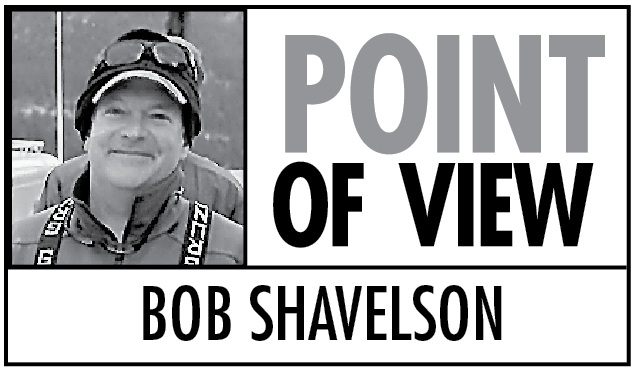There’s been a loud, angry and often uninformed debate over salmon habitat protection in the Kenai Peninsula Borough for the past couple years, and if we hope to protect our fisheries in the coming years, it’s important to understand some basic issues.
In 2011, the Kenai Peninsula Borough Assembly voted 7-2 to protect the vital habitat corridors along our lakes and streams that sustain our wild salmon runs. This vote recognized that all salmon habitat is important, and it extended and expanded earlier ordinances already on the books, to include remaining salmon streams and lakes in the borough
A small but vocal group of so-called property rights advocates, however, grabbed the salmon habitat ordinance as a symbol of government overreach, and worked others into a frothing frenzy that divided our community and reflected some of the worst of our body politic.
From the start, there was no compromise: Property rights were sacred and under no circumstances should government impose restrictions on private property that promote the public good. But these arguments are blind to the rich and well-developed constitutional history of public vs. private property rights in America and in Alaska.
Dating back to ancient Roman law, through the Magna Carta and the U.S. Constitution, up to the Alaska Constitution, private rights have always — always — bowed to the public interest. And for a simple reason: We cannot govern ourselves in a reasonable and orderly fashion if the interests of a few trump the rights of the many.
Think about it. If 5,000 individuals act in their own self-interest, can it possibly result in the betterment of the public good? Adam Smith — the godfather of our modern economic model — didn’t think so. And for good reason: The private interest is not, by definition, the public interest.
As the 49th state, our constitutional framers had the benefit of incorporating the best parts of the state constitutions from the Lower 48. And they decided that under the Alaska constitution, we the people — every man, woman and child in the state, including those who come after us — collectively own the fish and water resources of the state. It’s one of the things that sets us apart, and makes us, as Wally Hickle liked to say, the “owner state.” So, while we each have a right to clean water and healthy salmon habitat, no individual — regardless of their wealth or political power or the anger in their arguments — has the right to take these basic constitutional rights from current or future generations.
There are few truisms in our world, but one I’ve learned is that we all think we’re right. I have no doubt the opponents to fish habitat protections think their arguments are well-founded, but in a free and democratic society, facts and science — and not emotion and rhetoric — must rule the day.
And when it comes to facts and science, there’s zero debate — none — that riparian habitat is important for salmon survival. But much of the debate I heard conjured far-out conspiracies about the United Nations trying to take away private property rights on the Kenai Peninsula.
Needless to say, nothing could be further from the truth.
Perhaps most disturbing was the vitriol and belligerent bullying we saw from some of our elected officials, most notably Assemblyman Charlie Pierce from Sterling. Mr. Pierce didn’t let the facts get in his way as he threatened the mayor and others, and painted a false narrative that ignored our laws, our science, our love for our resources and sound public policy.
Curiously, Mr. Pierce, groping for any handhold in a losing argument, made unfounded conflict of interest allegations against fellow assembly members. Yet Mr. Pierce makes his living working for Enstar, a company laying and maintaining pipelines around anadromous waters, and Enstar would save considerable money on permitting if riparian protections disappeared.
It was similarly disturbing to hear the vocal opposition to salmon habitat protections from some of our local Realtors, backed by hefty advertising dollars from the National Association of Realtors out of Chicago. The Alaska Association of Realtors even went so far as to publicize the habitat protection ordinance as a “taking” of private property — a patently false assertion used to rally property owner support.
Public necessity restrictions on private property are commonplace, and creating an easement for salmon habitat is no different than a building setback that protects us from fires on neighboring land or a utility easement to allow passage of power, gas, water or sewer.
Furthermore, studies from across the nation show natural areas along waterbodies actually increase property values, so it’s hard to understand why some local realtors opposed these sensible fish protections.
In the end, a majority of Alaskans rose up to demand common sense habitat protections on the Kenai Peninsula. They understood we cannot afford to repeat the same mistakes made in Europe, New England and the Pacific Northwest, where once-prolific salmon runs have fallen to short-sighted management decisions.
Thanks go out to everyone who testified or wrote letters, and to Borough Mayor Mike Navarre and assembly members Bill Smith, Mako Haggerty, Brent Johnson, Linda Murphy, Hal Smalley and Sue McClure for listening to overwhelming public testimony in favor of basic fish habitat protections.
But the battle is not over.
Our salmon face unprecedented threats from warming temperatures, invasive species, encroaching development and allocation decisions driven by politics rather than common sense.
If we hope to pass along healthy salmon runs to our kids, we must recognize the serious impacts humans can have on fisheries habitat, and be prepared to make the tough policy calls needed to avoid them.
Bob Shavelson is the executive director of Cook Inletkeeper, a community-based nonprofit group that works to protect salmon habitat and water quality throughout the Cook Inlet watershed. www.inletkeeper.org.


